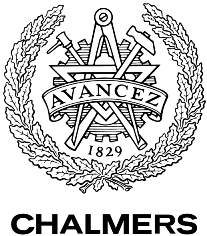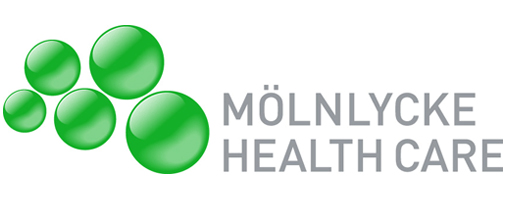Team:Chalmers-Gothenburg/Attributions
From 2012.igem.org
m |
m |
||
| (32 intermediate revisions not shown) | |||
| Line 1: | Line 1: | ||
{{Team:Chalmers-Gothenburg/Template2}} | {{Team:Chalmers-Gothenburg/Template2}} | ||
| + | <html> | ||
| + | <head> | ||
| + | <style type="text/css"> | ||
| + | div.box2 | ||
| + | { | ||
| + | width:250px; | ||
| + | height:600px; | ||
| + | background-color:#FFFFFF; | ||
| + | border:0px solid #D8D8D8; | ||
| + | } | ||
| - | + | div.box2 p | |
| + | { | ||
| + | margin:20px 20px; | ||
| + | font-weight:normal; | ||
| + | color:#000000; | ||
| + | align:justify | ||
| + | } | ||
| - | <div style=" | + | </style> |
| - | < | + | </head> |
| + | |||
| + | <body> | ||
| + | |||
| + | <div class="box2"; style="position:absolute;left:700px;top:330px;"> | ||
| + | <p><div align="left" style="margin-left:10px; margin-right:10px; "> <b><font size="9"><b>Sponsors</b></font></b> | ||
| + | </br> | ||
| + | </br> | ||
| + | </br> | ||
| + | <a href="http://microsynth.ch/" target="_blank"> | ||
| + | <img src="https://static.igem.org/mediawiki/2012/7/74/Microsynth_Logo_color.jpg" width="220" alt="Microsynth" /></a> | ||
| + | </br> | ||
| + | </br> | ||
| + | </br> | ||
| + | <a href="http://www.gatc-biotech.com/en/index.html" target="_blank"> | ||
| + | <img src="https://static.igem.org/mediawiki/2012/c/c1/GATC.gif" width="220" alt="GATC Biotech" /></a> | ||
| + | </br> | ||
| + | </br> | ||
| + | </br> | ||
| + | <a href="http://www.chalmers.se/en/Pages/default.aspx" target="_blank"> | ||
| + | <img src="https://static.igem.org/mediawiki/2012/d/dc/Chalmers40.png" width="150" alt="Chalmers" /></a> | ||
| + | |||
| + | |||
| + | </p> | ||
| + | </p> | ||
</div> | </div> | ||
| + | </div> | ||
| + | </body> | ||
| + | </html> | ||
| + | <div align="justify" style="width:auto; margin-left:0px; margin-right:300px;"> | ||
| + | __NOEDITSECTION__ | ||
| + | ='''Attributions'''= | ||
| + | '''Idea''' | ||
| + | The ideas from the Chalmers iGEM team were presented for the supervisors and advisors during a meeting. The supervisors and advisors only commented on the projects feasibility. The idea to develop a biodegradable pregnancy test kit was “thought out” by the students. | ||
| + | The supervisors and advisors then helped the students to proceed with the project by illustrating the usefulness of the pheromone pathway. The supervisors also provided relevant articles. | ||
| + | |||
| + | '''Homepage''' | ||
| + | |||
| + | All text, photos and graphics are written/taken/made by the students. The only exceptions are the sponsor logos and text that are directly provided by the sponsors. | ||
| + | |||
| + | '''Practical lab work and preparations''' | ||
| + | |||
| + | All preparations for the laboratory work except some common media and plates were done by the students. | ||
| + | |||
| + | All laboratory work during the summer has been performed by the students. The students received some advice how to perform the experiments from supervisors and other staff in the System Biology group at Chalmers. | ||
| + | |||
| + | '''Materials''' | ||
| + | |||
| + | The LHCGR gene was ordered from a synthesizing company. The fmo gene was provided by Si Wouk Kim from Chosun University in South Korea and the tryptophanase gene was derived from genomic DNA from ''E.coli''. The ''FIG1'' promoter was amplified from genomic yeast DNA. | ||
| + | |||
| + | The final strain used (IMFD-73) was provided by the Kondo group from Kobe University in Japan and has the endogenous GPCR Ste2 and the feedback regulator Sst2 deleted. Five amino acids in the native yeast Gα protein are replaced by the corresponding ones from the human Gα protein. | ||
| + | |||
| + | The lab strain CEN.PK 113-11C and the plasmids pSP-GM1 and pIYC04 were received from the System Biology Group at Chalmers. | ||
| + | |||
| + | '''Modeling''' | ||
| + | |||
| + | The idea to model the yeast pheromone pathway and to modify it to suit our needs was given to us by our supervisor Torbjörn Lundh. Ideas and suggestions of how to model our pathway was taken from different articles which we found ourselves in different databases. To solve the system of ODE's MATLAB was used. | ||
| + | |||
| + | |||
| + | |||
| + | </div> | ||
{{Team:Chalmers-Gothenburg/footer}} | {{Team:Chalmers-Gothenburg/footer}} | ||
Latest revision as of 12:05, 25 September 2012
Attributions
Idea
The ideas from the Chalmers iGEM team were presented for the supervisors and advisors during a meeting. The supervisors and advisors only commented on the projects feasibility. The idea to develop a biodegradable pregnancy test kit was “thought out” by the students. The supervisors and advisors then helped the students to proceed with the project by illustrating the usefulness of the pheromone pathway. The supervisors also provided relevant articles.
Homepage
All text, photos and graphics are written/taken/made by the students. The only exceptions are the sponsor logos and text that are directly provided by the sponsors.
Practical lab work and preparations
All preparations for the laboratory work except some common media and plates were done by the students.
All laboratory work during the summer has been performed by the students. The students received some advice how to perform the experiments from supervisors and other staff in the System Biology group at Chalmers.
Materials
The LHCGR gene was ordered from a synthesizing company. The fmo gene was provided by Si Wouk Kim from Chosun University in South Korea and the tryptophanase gene was derived from genomic DNA from E.coli. The FIG1 promoter was amplified from genomic yeast DNA.
The final strain used (IMFD-73) was provided by the Kondo group from Kobe University in Japan and has the endogenous GPCR Ste2 and the feedback regulator Sst2 deleted. Five amino acids in the native yeast Gα protein are replaced by the corresponding ones from the human Gα protein.
The lab strain CEN.PK 113-11C and the plasmids pSP-GM1 and pIYC04 were received from the System Biology Group at Chalmers.
Modeling
The idea to model the yeast pheromone pathway and to modify it to suit our needs was given to us by our supervisor Torbjörn Lundh. Ideas and suggestions of how to model our pathway was taken from different articles which we found ourselves in different databases. To solve the system of ODE's MATLAB was used.
 "
"





